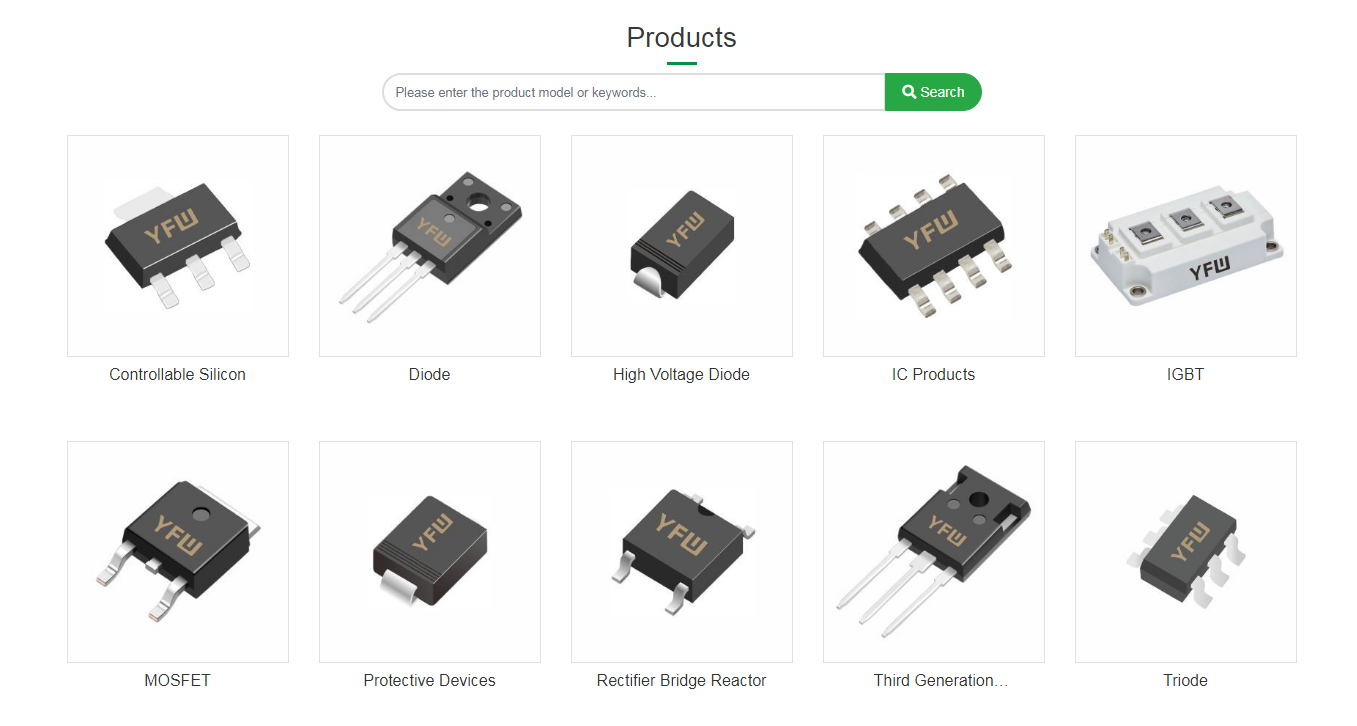Date:2025-03-18 Categories:Industry News Hits:913 From:Guangdong Youfeng Microelectronics Co., Ltd(YFW)
A power diode is a semiconductor device of unidirectional conduction, allowing current to flow in one direction while presenting a high resistance in the other direction. Power diodes are commonly used in rectifier circuits to convert alternating (AC) into direct current (DC). In power electronics, power diodes are mainly used in high-power applications such as power conversion, industrial motor drives, wind power, and photovoltaic power generation systems, etc. The structure of a power diode basically consists of a P-type semiconductor and an N-type semiconductor forming PN junction. When a forward voltage is applied to the diode (i.e., the P-type end is positive and the N-type end is negative), depletion region of the PN junction narrows, and current can flow through the diode. At this time, the diode is conducting, and the magnitude of the current depends on applied voltage and the characteristics of the diode. When a reverse voltage is applied (i.e., the N-type end is positive and the P-type end is), the depletion region widens, and the diode exhibits a high resistance state, blocking the current. The dynamic process of a power diode involves its operation state in AC circuit, including the two stages of conduction and cutoff. Throughout the entire AC cycle, the working state of the power diode will change with the change of voltage, generating specificforms. Conduction process: When the AC input voltage becomes forward, the diode begins to conduct. In this process, the diode's voltage rises from zero the threshold voltage (turn-on voltage), at which point the depletion layer disappears, and electrons can flow from the N-type region to the P-type region, causing current to rise rapidly. The rate of rise of the current depends on the forward resistance of the diode and the external circuit. Ideally, the current rise presents a right-angledotenuse shape, but in reality, due to the presence of capacitive and inductive effects, there will be a certain tilt in the rising edge. Conduction maintenance:After the diode is fully conducting, the waveform of the current will follow the positive half-cycle of the AC voltage. Ideally, the current waveform is identical to the input voltage, but in practice, the voltage waveform across the diode is lower than the input voltage by a constant voltage value due to the forward voltage drop. Cutoff process: the input voltage enters the negative half-cycle, the diode begins to cut off. The current rapidly decreases, but due to the presence of parasitic capacitance and inductance the circuit, the actual current decrease curve will have a certain lag and will not immediately drop to zero. The cutoff speed of the diode is affected by the reverse recovery time which is the time required for the diode to recover from the conducting state to the cutoff state. Cutoff maintenance: In the cutoff state, the diode is subjected a reverse voltage, which can be very high, so it is necessary for the diode to have sufficient reverse voltage withstand capacity. Ideally, the current should be zero; however, reality, there may be a slight reverse leakage current in the initial stage. The dynamic characteristics of power diodes are crucial for their performance in power systems. For example, the of devices such as inverters, rectifiers, and frequency converters needs to consider the switching speed, forward and reverse voltage drops, and withstand voltage of the diodes. designing these devices, engineers need to select the appropriate power diodes according to the specific requirements of the application to ensure the efficient and reliable operation of the system

Previous:MUR2540AC-FAC-DC 25A 400V TO-220AC-220FAC263 Printed YFW micro brand
Next:NZT560A 1A 80V SOT-223 Marked NZT560A Small Signal Transistor Y Micro Brand